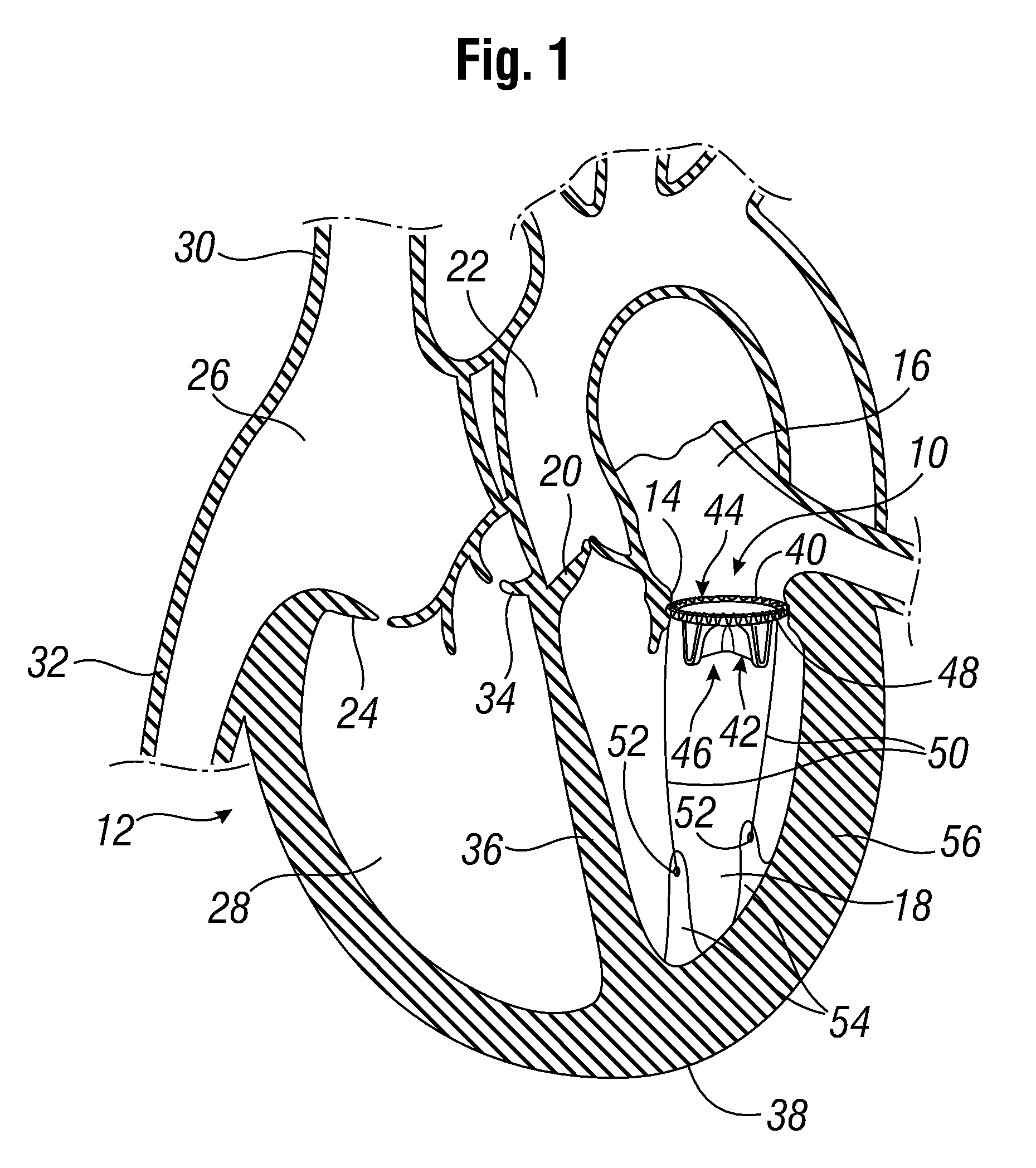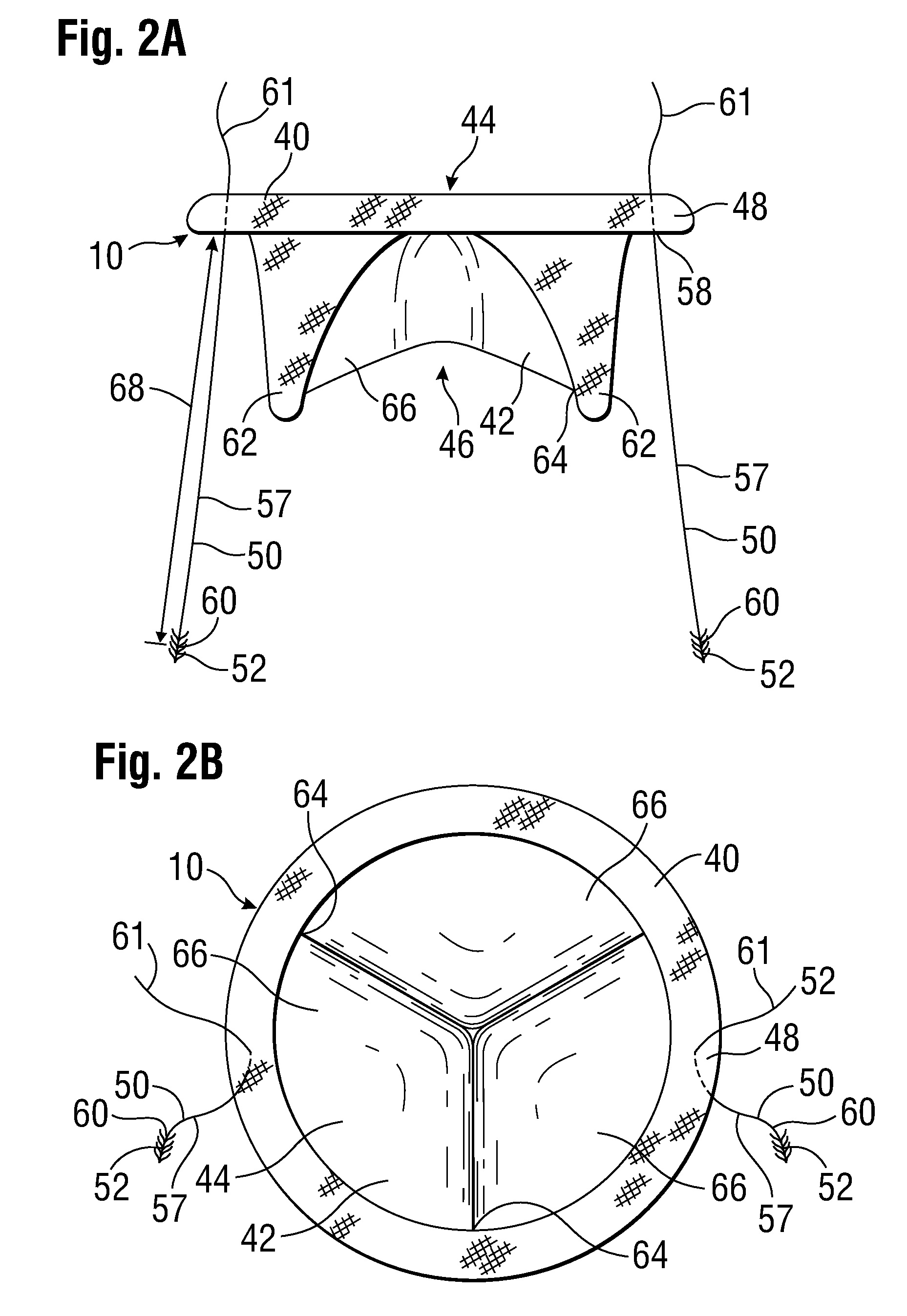Prosthetic valve with ventricular tethers
a heart valve and ventricular tether technology, applied in the field of prosthetic heart valves, can solve the problems of serious cardiovascular compromise, heart valves can be rendered less effective, and severe debilitating and even fatal,
- Summary
- Abstract
- Description
- Claims
- Application Information
AI Technical Summary
Benefits of technology
Problems solved by technology
Method used
Image
Examples
Embodiment Construction
[0044]FIG. 1 shows a prosthetic mitral-valve assembly 10 deployed in a human heart 12, and more specifically implanted in the native mitral valve annulus 14. Note that the native mitral valve is not depicted, as its major structures (including the native valve leaflets and native chordae tendinae) are often removed to accommodate surgical implantation of the prosthetic mitral valve assembly 10. For purposes of background, the four-chambered heart 12 is explained further. On the left side of the heart 12, the native mitral valve annulus 14 is located between the left atrium 16 and left ventricle 18. The mitral valve annulus 14 is defined as the portion of tissue surrounding the mitral valve orifice. The left atrium 16 receives oxygenated blood from the pulmonary veins. The oxygenated blood that is collected in the left atrium 16 enters the left ventricle 18 through the mitral valve.
[0045]Contraction of the left ventricle 18 forces blood through the aortic valve 20 and into the aorta ...
PUM
 Login to View More
Login to View More Abstract
Description
Claims
Application Information
 Login to View More
Login to View More - R&D
- Intellectual Property
- Life Sciences
- Materials
- Tech Scout
- Unparalleled Data Quality
- Higher Quality Content
- 60% Fewer Hallucinations
Browse by: Latest US Patents, China's latest patents, Technical Efficacy Thesaurus, Application Domain, Technology Topic, Popular Technical Reports.
© 2025 PatSnap. All rights reserved.Legal|Privacy policy|Modern Slavery Act Transparency Statement|Sitemap|About US| Contact US: help@patsnap.com



